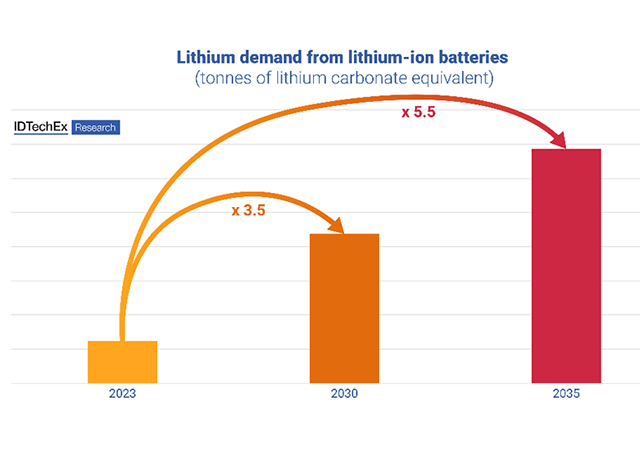
 Pavel Makarevich, VP of PROVEN Solution
Pavel Makarevich, VP of PROVEN Solution
Augmented reality (AR) is a formidable force with significant potential to transform the manufacturing sector across various industries. It is revolutionising multiple aspects of industrial operations by overlaying digital information onto the physical world, including assembly, maintenance, training, inspection, design, inventory management, and workplace safety, according to Pavel Makarevich, VP of PROVEN Solution.
Industry leaders in the GCC region are increasingly dedicating resources to enhance the synergy between humans and machines. A PwC report states that AR and VR (Virtual reality) technologies in the UAE could contribute over $4 billion to the local economy by 2030. To maintain a competitive edge, forward-thinking manufacturers prioritise implementing automation for routine, monotonous tasks and the proficient tracking of crucial data.
IMPACT OF AR IN INDUSTRIAL APPLICATIONS
ASSEMBLY AND PRODUCTION LINE ASSISTANCE: ENHANCING EFFICIENCY
One of the primary uses of augmented reality in manufacturing is providing real-time guidance during assembly and production processes. AR-based wearable devices like smart glasses overlay digital instructions and diagrams onto physical components. This technology assists workers in each step, reducing errors, improving efficiency, and enabling faster training for new employees. By ensuring accurate and streamlined assembly, AR enhances productivity and reduces operational costs in the long run.
MAINTENANCE AND REPAIR: STREAMLINING TASKS
AR plays a crucial role in maintenance and repair tasks within the manufacturing sector. By superimposing step-by-step repair instructions and highlighting relevant components, technicians can quickly identify issues, locate problematic parts, and perform repairs efficiently at the earliest stage. This technology saves valuable time, minimises costly downtime, and ensures optimal asset utilisation. AR-enabled maintenance also facilitates proactive monitoring and predictive maintenance, preventing breakdowns and optimising equipment performance.
TRAINING AND SIMULATION: ENHANCING SKILLS
Another primary use of augmented reality for industrial applications is upskilling employees. Augmented reality provides a powerful tool for training and simulation in manufacturing industries. Through AR-based training programs, workers can visualise complex processes, simulate real-life scenarios, and interact with virtual objects. This immersive training environment improves knowledge retention, accelerates the learning curve, and enhances skill development. Furthermore, AR training can be gamified, making it engaging and enjoyable for trainees, thus maximising learning outcomes.
QUALITY CONTROL AND INSPECTION: ENSURING PRECISION
Ensuring high product quality is essential in manufacturing industries. Augmented reality-assisted quality control enhances inspection processes by overlaying real-time visual information. AR devices can highlight potential defects, superimpose an ideal model for comparison, and guide inspectors through the inspection process. This technology improves accuracy, expedites quality control procedures, and guarantees adherence to stringent standards. AR-enabled inspection also enhances traceability and data analysis, leading to continuous process improvement.
DESIGN AND PROTOTYPING: DRIVING INNOVATION
Augmented reality revolutionises the design and prototyping stages of product development in manufacturing. By utilising AR, designers can transform digital 3D models into physical representations that can be superimposed onto real-world objects. This enables designers to evaluate product dimensions, aesthetics, and ergonomics more effectively, facilitating faster iterations and reducing time-to-market. AR-driven design and prototyping foster innovation, allowing manufacturers to bring cutting-edge products to market ahead of their competition.
INVENTORY MANAGEMENT: OPTIMISING PROCESSES
Effective inventory management is critical for streamlined manufacturing operations. Augmented reality systems provide real-time information about stock levels, locations, and replenishment schedules. Warehouse workers can efficiently locate, pick, and manage inventory by overlaying this data onto physical storage areas. AR-enabled inventory management reduces errors, improves inventory accuracy, and optimises supply chain operations. Real-time inventory insights facilitate seamless production planning and minimise stockouts or excess inventory.
WORKPLACE SAFETY AND HAZARD AWARENESS: ELIMINATE CONCERNS
Augmented reality for industrial applications is crucial in promoting workplace safety and mitigating hazards in manufacturing industries. It overlays virtual warning signs, cautionary information, or real-time monitoring data onto the physical environment. AR devices provide workers with necessary safety instructions, thus preventing accidents, reducing risks associated with hazardous tasks, and ensuring compliance with safety regulations. AR-enabled safety training also fosters a safety culture, improving overall workplace well-being.
TYPES OF AUGMENTED REALITY FOR INDUSTRIAL APPLICATIONS
In manufacturing and assembly operations, three main augmented reality (AR) types are currently being used. Each of these types enhances functions by providing an immersive experience.
TABLET AUGMENTED REALITY FOR INDUSTRIAL APPLICATIONS
Tablet AR technology combines tablets and other handheld devices, like smartphones, to present work instructions through AR apps. Many people are familiar with AR applications on social media, like Snapchat filters. However, tablets and phones have increasingly entered the industry in recent years.
Tablet AR is exceptionally user-friendly, and most people are already familiar with the technology, which makes training more accessible and reduces start-up time.
WEARABLE AUGMENTED REALITY IN MANUFACTURING
Wearable AR technology utilises AR glasses or a headset to project graphics onto the surrounding environment. These devices serve as lightweight, hands-free computers that display and store information.
Compared to tablet AR, wearable AR is a popular choice in factories due to its mobility and dynamic graphics.
PROJECTED AR SOLUTIONS FOR MANUFACTURING
Projected AR involves using projectors and vision sensors to display virtual step-by-step interactive graphics on any work surface. It applies to a wide range of manufacturing solutions, including assembly, part picking and kitting, testing and inspection, training, and maintenance.
It is the most versatile type of AR, the optimal AR solution for all manufacturing industries, and provides numerous enterprise benefits.
THE FUTURE OF AR IN MANUFACTURING
Augmented reality is transforming manufacturing practices and processes in every industry. By integrating AR technology into various applications, manufacturers can reap significant benefits such as enhanced efficiency, improved quality control, streamlined inventory management, and increased workplace safety.
As AR technology advances, it will undoubtedly become an indispensable tool in the manufacturing sector, driving innovation and helping businesses achieve higher levels of productivity and competitiveness.

